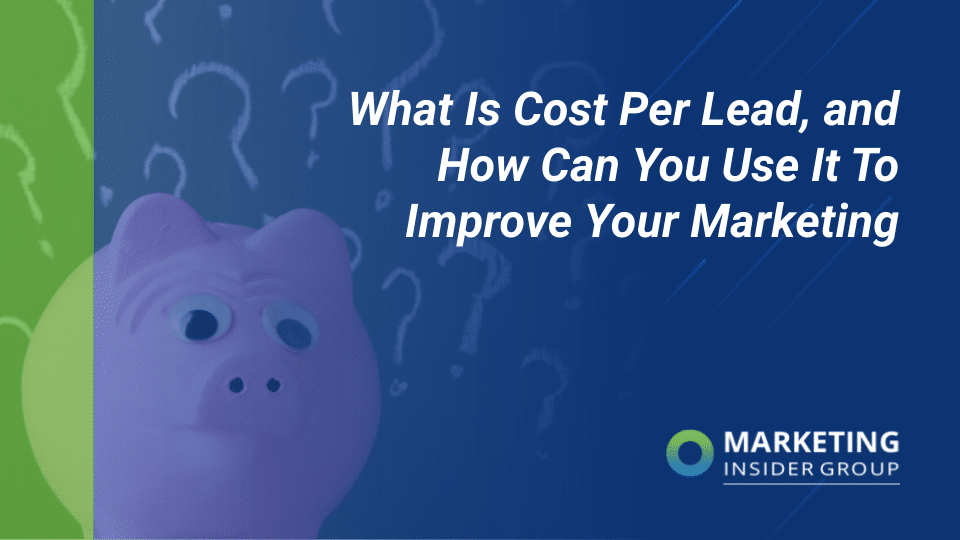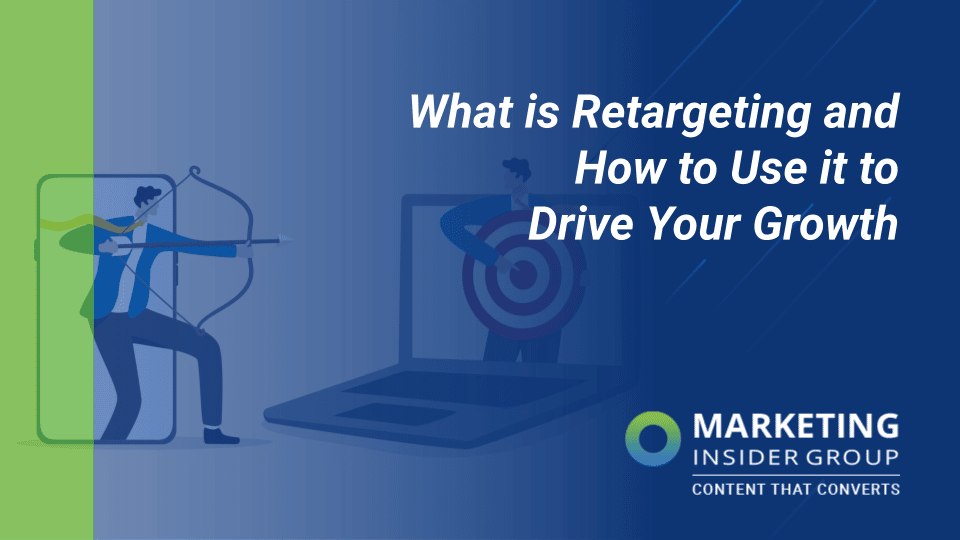
What is Retargeting and How to Use it to Drive Your Growth
Retargeting – sometimes referred to as re-marketing – is an effective form of online promotion that helps businesses reach people who have previously visited their website.
Why do you need it? Well, because it’s easier than ever to lose a sale online.
Think of it like this: you successfully drive a potential customer to your site with great content or social media engagement.
But then their phone rings. Or they have to take a quick meeting. Their child calls their name. They look up at the TV and forget to return. Or one of a million other potential distractions in our fast-paced world get in the way.
They could be lost forever. Or — you could use retargeting to get them back to your site.
Typically, most websites convert 3% of users on their first visit. Retargeting allows brands to get in front of the 97 percent of visitors that haven’t yet converted – whether they weren’t ready to buy or got distracted during the checkout process.
Without retargeting, bounced users would be lost forever. It’s time to learn how you can bring them back.
That’s what we’ll cover in the sections that follow. You’ll learn what retargeting entails, why your business should be using it, which platforms to do it on, and best practices to maximize ROI of your content.
Quick Takeaways:
- Retargeted web visitors convert at a 70% higher rate.
- Google, Facebook, LinkedIn and other social platforms are effective places to use retargeting.
- Retargeting ads are most effective when they incentivize, are personalized, and/or leverage high-value content.
The Real Customer Journey
As a marketer, you probably conceptualize the customer journey as some sort of linear timeline that leads the prospect neatly toward conversion. That might mean visiting your website, downloading a free eBook, reading the eBook, understanding the value of your service, and making a purchase. The next minute, a sales rep reaches out to the new customer, welcomes them, gives them the information they need, and the rest is history.
“Here’s a fact that should make you uncomfortable: Approximately 92% of people who visit your website are not yet ready to purchase your product or service. They might be interested, but they’re not quite ready to convert.” – Forbes
In reality, the customer journey is typically not so linear. People visit your website more than once, with visits spaced over weeks or even months. They check out your social media platforms, read a blog you published two years ago, and subscribe to your mailing list but fail to open a single email. Eventually, they decide to contact you — they’re undecided. Your sales rep does a great job of easing their concerns and, finally, they make a purchase. Same outcome. Very different process.
Marketers need to be aware of and account for the real customer journey, the convoluted tangle of activity that is unique to each and every buyer. One of the best ways to do that is with a retargeting campaign.
What is Retargeting (or Remarketing)?
So what exactly is retargeting? In short, retargeting is the process of monitoring the behavior of your web visitors so you can drive them back to your site later.
It’s done by adding code to your website that tracks user actions by placing cookies in their browsers. You can then use that information to show them targeted ads when they’re elsewhere on the internet.
Those requests you get to “accept all cookies” when you visit a new website? It’s retargeting in action. Brands are asking your permission to track what you’re doing so they can show you ads that are relevant to you.
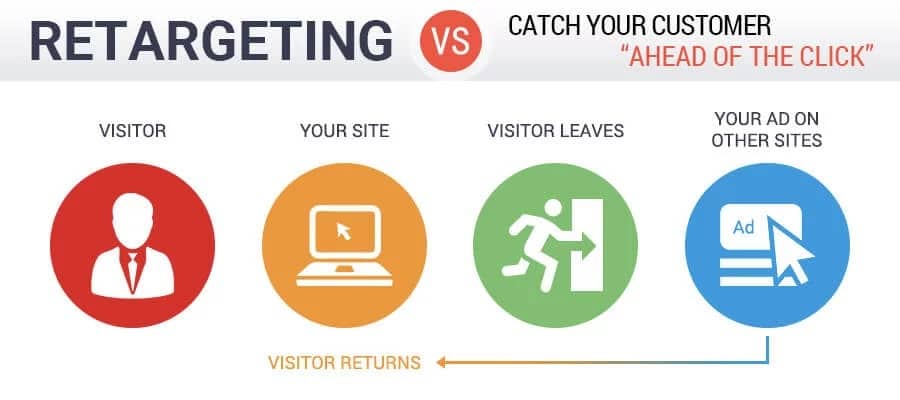
The majority of users won’t take action unless they feel like they know a business – even trust a business. A marketing rule of thumb suggests that a customer needs to be exposed to a brand seven times before they can make a purchasing decision.
Retargeting builds the visibility of your brand by directing ads to users that have already shown interest in your product or service, usually by visiting your website.
Retargeting offers exceptional potential for personalization and highly sophisticated campaigns. A user that abandons the checkout process can be shown a different set of retargeting ads than a user that quits your site without adding anything to their cart. You can customize ads for a whole range of triggers: web visits, email openings, newsletter sign-ups, link clicks, lead magnet downloads, and more.
When executed effectively, this level of personalization promotes trust. And when a customer starts to trust your brand, they are likely locked in.
“All things being equal, we always gravitate toward the option we trust most and the option that presents the fewest barriers.” — John Hall at Forbes
Retargeting may also deliver a higher marketing ROI than other digital channels as it focuses your marketing spend on people that have demonstrated interest.
Today 87% of marketers use site retargeting to attract potential customers back to their website. Given that only 2% (!) of web visitors convert on their first visit to any site, it’s a smart strategy for brands to capture low-hanging fruit in their web traffic and avoid losing prospects who will likely convert with a little bit of encouragement.
How Does Retargeting Work?
There are two types of retargeting: pixel-based and list-based. Each has advantages that you can use to bolster your campaign goals.
Pixel-based retargeting
Pixel-based – or cookie-based – retargeting uses a JavaScript code to anonymously track your audience across the web.
It works like this: you add a small, unnoticeable piece of code to your website. This code is known as a pixel and won’t impact your site’s performance. When a new user lands on your website, the code drops a browser cookie. When your cookied visitor browses the web later on, your retargeting provider will display ads to them.
List-based retargeting
List-based retargeting works only when you have someone’s contact information in your database. List-based retargeting involves uploading a list of email addresses to a retargeting campaign – generally on a social media platform like Facebook – and serving ads only to those on that list.

Why Retargeting Needs to Be Part of Your Digital Strategy
Let’s look at 3 reasons why retargeting should be part of your digital marketing strategy and the benefits your brand will experience from doing it.
Retargeting helps build brand awareness
Awareness campaigns allow you to re-engage web visitors through relevant products, new features, and announcements and are typically pixel-based.
Awareness campaigns are not as narrowly targeted as other campaigns, meaning you can expect a lower-than-average click-through-rate. That being said, conversions aren’t the goal here. Impressions and engagements are more meaningful metrics to track.
Awareness campaigns are often the precursor to more targeted, lucrative conversion campaigns.
Retargeting increases conversions and sales
Conversion campaigns encourage users to take a next step – whether that involves completing the checkout process, filling out a landing page form, downloading a freebie, or making a purchase. Conversion metrics to track include website clicks, cost per lead (CPL), and form submissions.
Conversion campaigns can be facilitated by both pixel-based and list-based retargeting strategies. For example, you can use a pixel-based ad to generate leads – advertisements might direct a user to a landing page where they can enter their information. Then, you can use a list-based campaign to retarget users that submitted the landing page form. These second-round advertisements encourage users to make a purchase.
Consumers actually like retargeted ads
The consensus view of retargeted ads has always been tainted with a little bit of uncertainty about their use of individual consumer data. And there’s no doubt about it — consumers do worry about their online privacy.
At the same time, however, they are also more aware than ever that brands are using their information to advertise to them and target their buying preferences. And they still browse and buy online at a rapidly increasing rate.
Here’s what it comes down to: retargeting doesn’t turn consumers off as long as it’s done ethically (AKA you’re only retargeting people when it actually makes sense and they’ve agreed to your privacy policy).
In fact, recent research has found that 25% of consumers say they actually enjoy seeing retargeted ads. And while a quarter of consumers may not seem encouraging, actual consumer behavior suggests that number is quite a bit higher.
Here’s what the numbers tell us:
- Retargeted ads earn a click-through rate 10x higher than regular display ads
- Retargeted website visitors are 70% more likely to convert
- 3 out of 4 consumers notice retargeted ads when they see them
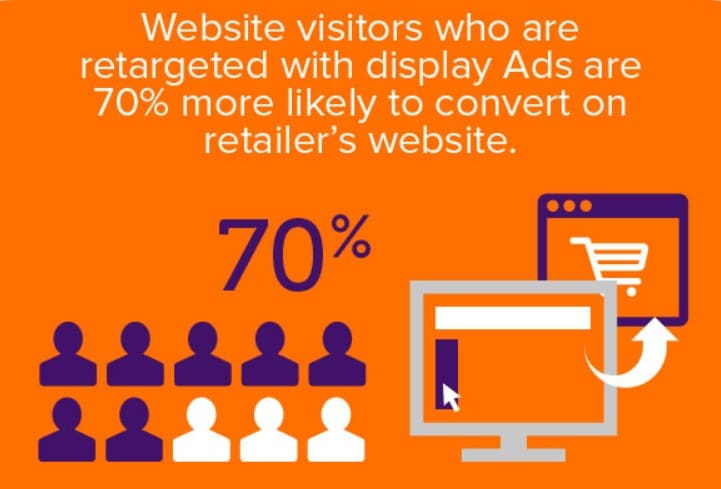
Image Source: Invesp
It’s helpful to think about this in the context of your own life, too. We all see ads for products and brands we’ve briefly visited without buying from. But rather than get annoyed, our interest is usually sparked again. We may click on the ad to look at it again and rethink whatever reasoning we had before for not buying. We may follow the brand on social media for updates.
Retargeting is a massive opportunity for brands to cut down on lost sales by reminding consumers why they were interested in the first place and incentivizing them to come back and make a purchase.
Where to Retarget (Other Than Your Website)
Google and YouTube
Google and YouTube are the two most visited websites in the world, with a casual combined 85 billion monthly views (nbd). You can target ads on these massive platforms with Google Ads on the Google Display Network.
Most consumers are doing their brand and product research using Google search. What better place, then, to have your ads displayed to convince users to choose you?
Facebook and Instagram
Ads on the two platforms are both run under the Meta Business Suite. You add the Facebook Pixel to your website’s code. When users take an action on your site (for example, adding to cart or making a purchase) the pixel is triggered and they’ll see retargeted ads on both Facebook and Instagram.
Learn more about the Meta Pixel here.
TikTok
TikTok has exploded onto the scene over the past two years. It’s easy to assume this platform might be best for targeting younger audiences, but the truth is there are tons of audiences on TikTok that encompass a range of ages and interest areas.
For example #MomTok — moms sharing tips, stories, and advice — is one of the most active corners of the app. #BusinessTok, #FitnessTok, and #BookTok are some of the other most popular hashtag-driven interest groups on the app. These are only a few examples. In other words: retargeting on TikTok is for every type of audience.
For B2B companies or brands targeting a more corporate or professional audience, LinkedIn could be an ideal platform for your retargeting efforts. You can add the LinkedIn Insight Tag to your website to begin tracking your visitors and serving them ads on the LinkedIn platform.
Use Cases for Retargeting Campaigns
1. Abandoned Shopping Carts
The abandoned shopping cart doesn’t have to be the end of the engagement. A retargeting campaign can encourage users to revisit their cart and complete the checkout.
Abandoned checkout campaigns are typically delivered by email. The email will address the cause of the abandonment – whether that be timing, pricing, or a distraction – and offer a solution – a discount code, free shipping, or some other exclusive offer.
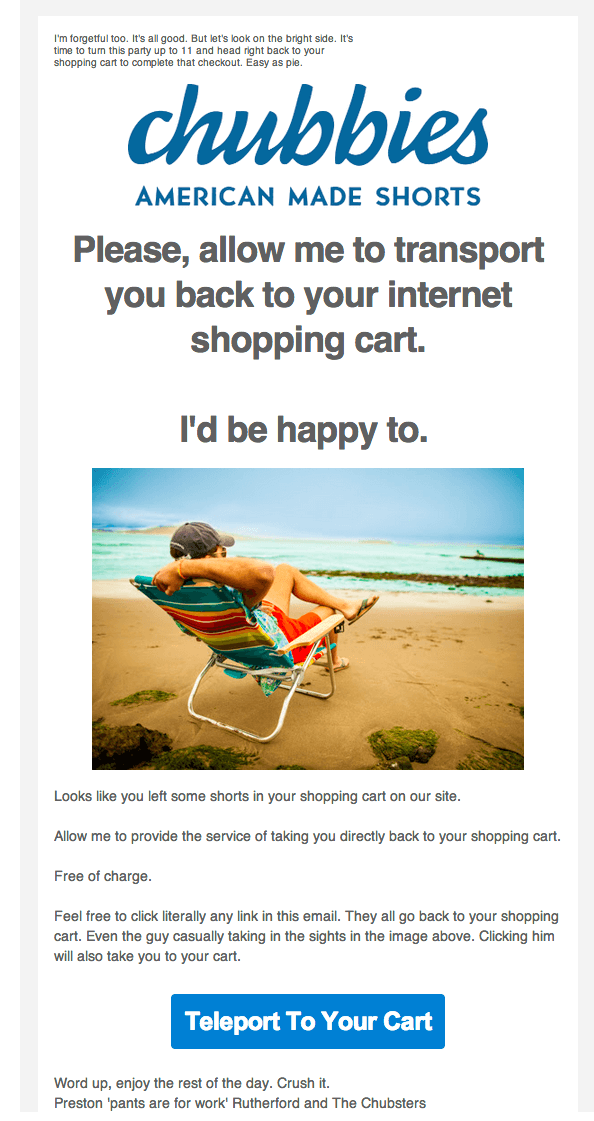
2. Time-limited Deals
Someone has expressed interest in your product or service – you can use a retargeting campaign to create a sense of urgency, to design a now-or-never situation for the user. For example, you might offer a limited-time discount. If they don’t take action now, they’ll miss out.
3. Product Showcase
Dynamic retargeting techniques can help you lure users back to your site by showcasing products they viewed when visiting your website. Personalized product showcases remind a user just how interested they were in your product, encouraging them to revisit the product page and take the plunge.
Retargeting Best Practices
Incentivize
The thing about web visitors you retarget is that they have shown interest in your brand already, but for some reason they weren’t motivated to make a purchase (or maybe they did but haven’t been back to make another one).
The way to convince them? Offering incentives. Consider this: you see a pair of shoes you love. You almost buy them but you think “Well, they’re just a little too pricey. I’m going to pass.”
A few days later you see those shoes you love, except they’re being offered at a discount. Your main argument for not buying the shoes is gone. You’re much more likely to go back and make the purchase.
Incentivizing your retargeting audiences is worthwhile because you eliminate one of the biggest roadblocks to purchase: concerns about price.
Here’s an example from American Express:
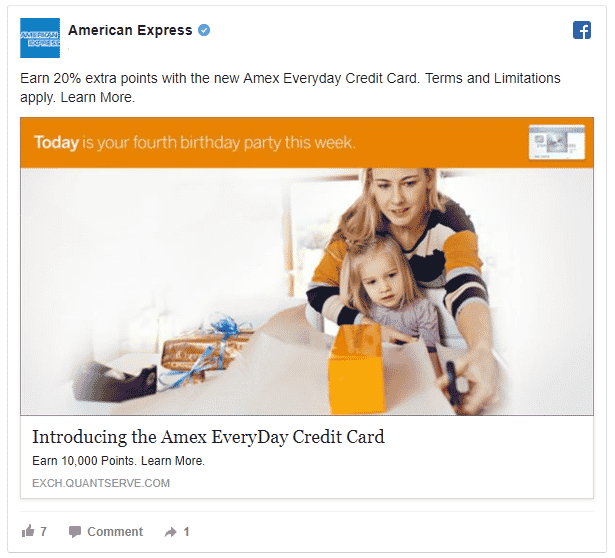
Personalize
Like all other kinds of online experiences, consumers want their retargeted ads to be personalized to their preferences. Nearly 80% of consumers say personally relevant ad content from brands increases their purchase intent.
Adding simple phrases that are unique to a person’s experience with your brand (i.e. “You left this item in your cart!” or “Based on your previous purchase, we think you’d love this!”) can be what makes your ad stand out to your audience.
Here’s an example from Airbnb, which shows a listing from a destination this user already searched for:
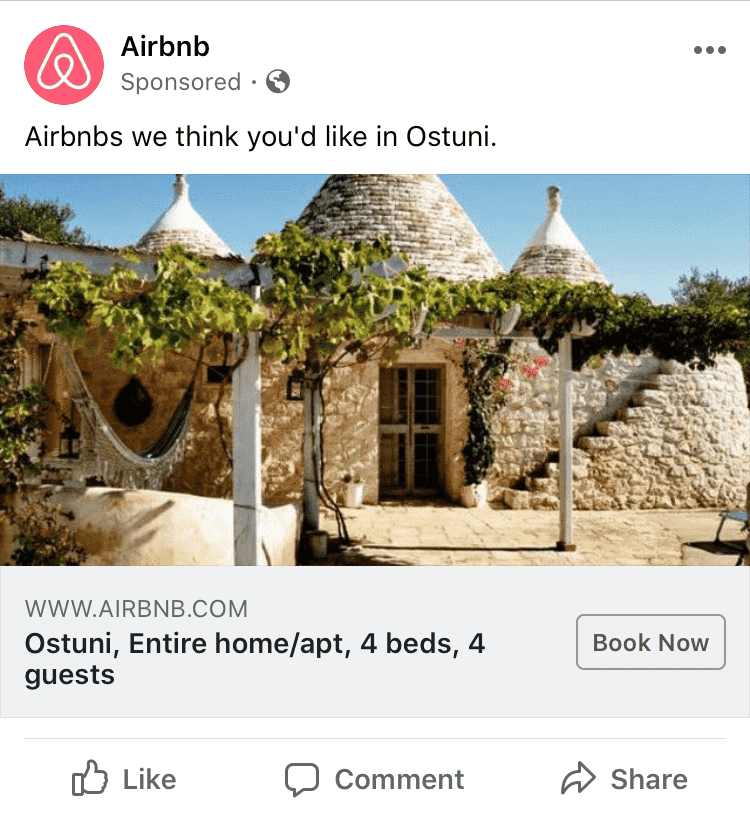
Image Source: WebFX
Leverage Content
Content drives more organic traffic than any other method of digital marketing. That said, targeted ads are the highest-converting of all methods. Why not combine the two for maximum ROI?
Consider the types of content your web visitors interact with and/or what content created by your brand would be most relevant to them. Promote it through your ads, emphasizing how it can help users solve problems, learn something new, or accomplish an important goal.
Content that can be effectively marketed through retargeting ads include:
- Blog articles
- How-to guides
- Checklists
- Webinars and video demos
- Ebooks and whitepapers
Here’s an example from Unbounce:

Image Source: Sprout Social
Nothing demonstrates the value of your brand and established authority better than great content. To maximize conversions, be sure you include strong CTAs with your content telling users what you want them to do next (like sign up for emails or start a free trial).
Over to You
Retargeting is a powerful tool, but it’s not always straightforward. It’s crucial that you track and analyze the success of your retargeting campaigns to refine your approach and optimize your ROI.
Great content creates a strong foundation for your advertising, retargeting (on different platforms) as well as other digital marketing strategies. The team at Marketing Insider Group can deliver you optimized, ready-to-publish blog content every single week for one year (or more).
Check out our SEO Blog Writing Service or schedule a quick consultation with me to get started!


